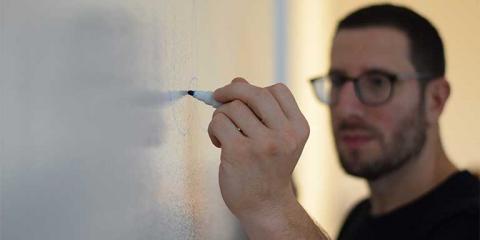Whether you're wondering how much time does it take to learn Photoshop, or how long does it take to learn, you'll be happy to know it doesn't take long to learn the basics. You can learn the essentials of Photoshop in a single day of study as part of a course, although it will take at least one additional day of studying to have a solid foundation. Many more days of training and weeks of practice are required to master Photoshop. The amount of time it takes to learn Photoshop varies depending on the learners prior experience with graphic design software. While basic functionality can be learned in a single day-long Photoshop course, the same skills will take a week or more if learning on your own using tutorials or a book. More advanced features and techniques take more time to master. Someone new to Photoshop will first learn how to understand image resolution and balance colors to create a good image, then learn to crop, resize, and adjust brightness, as these are foundational skills. More advanced users will want to blend multiple images together into a composite or learn to retouch only portions of an image, using skills that take longer to learn and require an understanding of foundational skills before they can be taught.
Because Photoshop is a complex program with a wide range of capabilities, it takes some time to gain foundational skills. The basics can be learned in one day with the help of a class. To become proficient using all the capabilities of Photoshop takes weeks of learning and months or years of practice.
The amount of time it takes to learn Photoshop also depends on your goals. If you want to learn Photoshop to develop skills that are on par with industry professionals, it will take longer than if you are learning basic skills for personal projects.
One of the fastest ways to learn Photoshop is through courses . Learning with a live instructor helps you to get up to speed quickly, and you can become quite skilled in only a single day or two. Most classes include step-by-step instructions on how to use the various features of the program. Additionally, online communities such as forums and social media groups offer a space for users to share tips, ask questions, and receive feedback from other Photoshop enthusiasts.
Another option to learn is through Photoshop tutorials which allow you to learn independently, at your own pace. As you don’t have the benefit of a live instructor to answer questions, tutorials can be slower to complete, but the benefit is they are available as a low-cost option for learning the basics. The quality, teaching style, and accuracy of the information isn’t always vetted or up to date, so be certain to find tutorials from a reputable source.
Another effective way to learn Photoshop is by working on real-life projects. You can practice editing a photo using techniques learned in a class or tutorial, or design a poster for an event using new found skills as part of your training. This helps you gain practical experience, and also builds a portfolio that showcases your skills to potential clients or employers.
To become proficient in using all of Photoshop's features, it's important to invest time and effort into learning. This can include setting aside regular practice sessions, attending additional workshops or classes, or even getting certified in Photoshop. By dedicating yourself to learning Photoshop, you can unlock its full potential and create stunning visuals that leave a lasting impression.
Because Photoshop is such an essential tool for graphic designers, photographers, and artists, it’s a necessary skill for anyone wanting to work in these creative fields. As Photohsop is constantly evolving along with the Creative Cloud, it adds new tools and functionality, making it important to continue to invest time in professional development education so you can work efficiently and creatively. Whatever your reason is for wanting to learn Photoshop, there are courses, books, and tutorials to help you learn tin days or weeks.
